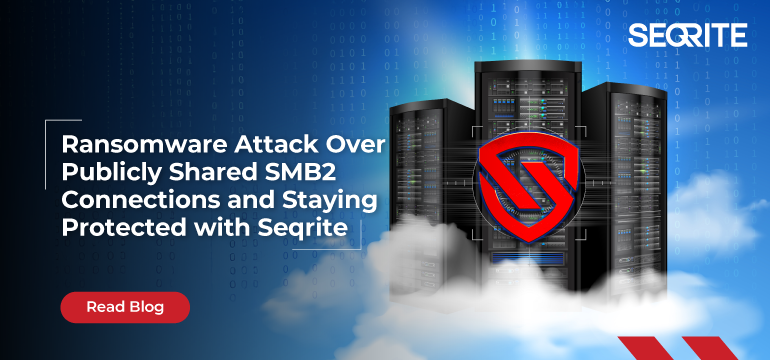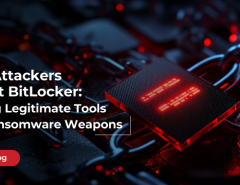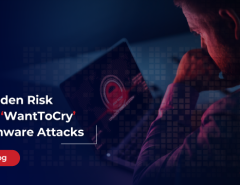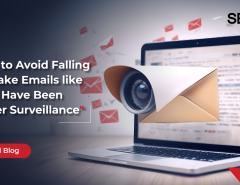Ransomware continues to evolve as one of the most devastating cybersecurity threats, and attackers are finding new ways to exploit vulnerabilities. One such method involves targeting publicly shared SMB2 (Server Message Block version 2) connections. SMB, widely used for file and printer sharing, can become a lucrative target for attackers when left exposed to the internet or misconfigured. In this blog, we’ll explore how adversaries exploit publicly shared SMB2 connections to deploy ransomware, encrypt data, and compromise networks. We’ll also discuss how Seqrite / Quick Heal Antivirus can protect your systems from these attacks.
How Ransomware Exploits SMB2 Connections?
SMB2 is a protocol designed for efficient file sharing within networks. However, it can become a security risk when misconfigured or left vulnerable. Here’s how attackers exploit it:
- Scanning for Exposed Shares: Cybercriminals use tools like Shodan to find publicly accessible SMB shares. They look for weak or misconfigured SMB2 connections that are exposed to the internet.
- Exploitation of Vulnerabilities: Using exploits like EternalBlue (CVE-2017-0144), attackers target unpatched systems running SMB2. These exploits allow unauthorized access and privilege escalation.
- Delivery of Ransomware: Once access is gained, attackers upload ransomware to the SMB share or directly execute it. This allows the ransomware to encrypt shared files and spread to connected devices.
- Lateral Movement: The ransomware uses the SMB2 protocol to move laterally across the network, infecting other systems and shares.
- Data Encryption and Ransom Demand: After encrypting files, the ransomware leaves behind a ransom note demanding cryptocurrency payment for decryption keys.
Real-World Examples of SMB-Based Ransomware Attacks
WantToCry: SMB protocol widely used for file and resource sharing across networks, is often left exposed due to weak credentials, outdated software, and poor security configurations.
WannaCry: Exploited EternalBlue to propagate via SMB, causing widespread disruption across industries.
NotPetya: Used SMB exploits to spread ransomware and encrypt systems globally.
Ryuk: Leveraged SMB connections for lateral movement, targeting high-value organizations.
How Seqrite Protects Against SMB2 Exploits and Ransomware
Seqrite Endpoint Protection offers robust protection against ransomware and vulnerabilities associated with SMB connections. Here’s how it helps:
- Ransomware Protection: Seqrite Endpoint protection monitors and blocks unauthorized file encryption in real-time. It ensures that ransomware cannot encrypt files on SMB shares.
- Behavioral Detection: With Behavioural Detection Technology, Seqrite identifies and blocks suspicious activities, such as unauthorized file modifications or lateral movement attempts via SMB2.
- Network Attack Prevention: Seqrite blocks exploit attempts on SMB vulnerabilities, including EternalBlue and related attacks. It prevents attackers from gaining a foothold in your network.
- Data Backup and Restore: The Data Backup and Restore feature ensures that you can recover your data in case of any ransomware attack, minimizing downtime and loss.
- Vulnerability Scanner: Seqrite Endpoint Protection identifies unpatched systems, insecure SMB shares, and other misconfigurations. This proactive approach helps in reducing the attack surface.
- Firewall and Intrusion Detection: Seqrite’s Firewall Protection monitors incoming and outgoing traffic, preventing unauthorized access to SMB connections.
- Email Protection: Many ransomware attacks begin with phishing emails. Seqrite scans email attachments and URLs to ensure no ransomware payloads are downloaded onto your systems.
Best Practices for SMB2 Security
While Seqrite provides a strong layer of defense, organizations should adopt these best practices to further secure SMB2 connections:
- Restrict Public Access: Block access to SMB ports (like port 445) on the internet.
- Use Strong Authentication: Enforce strong passwords and Multi-Factor Authentication (MFA) for SMB access.
- Update Systems Regularly: Patch SMB vulnerabilities to stay protected from known exploits.
- Disable SMB1: Use SMB2 or SMB3 with encryption and signing enabled.
- Monitor Network Activity: Monitor and detect unusual network behavior.
Conclusion
Ransomware attacks exploiting publicly shared SMB2 connections pose a severe threat to businesses and individuals alike. By understanding the attack vectors and implementing robust security measures, such as those offered by Seqrite you can safeguard your systems and data.
Authors
Umar Khan A
Niraj Lazarus Makasare
Dixit Ashokbhai Panchal
Sumit Patil
Matin Tadvi




